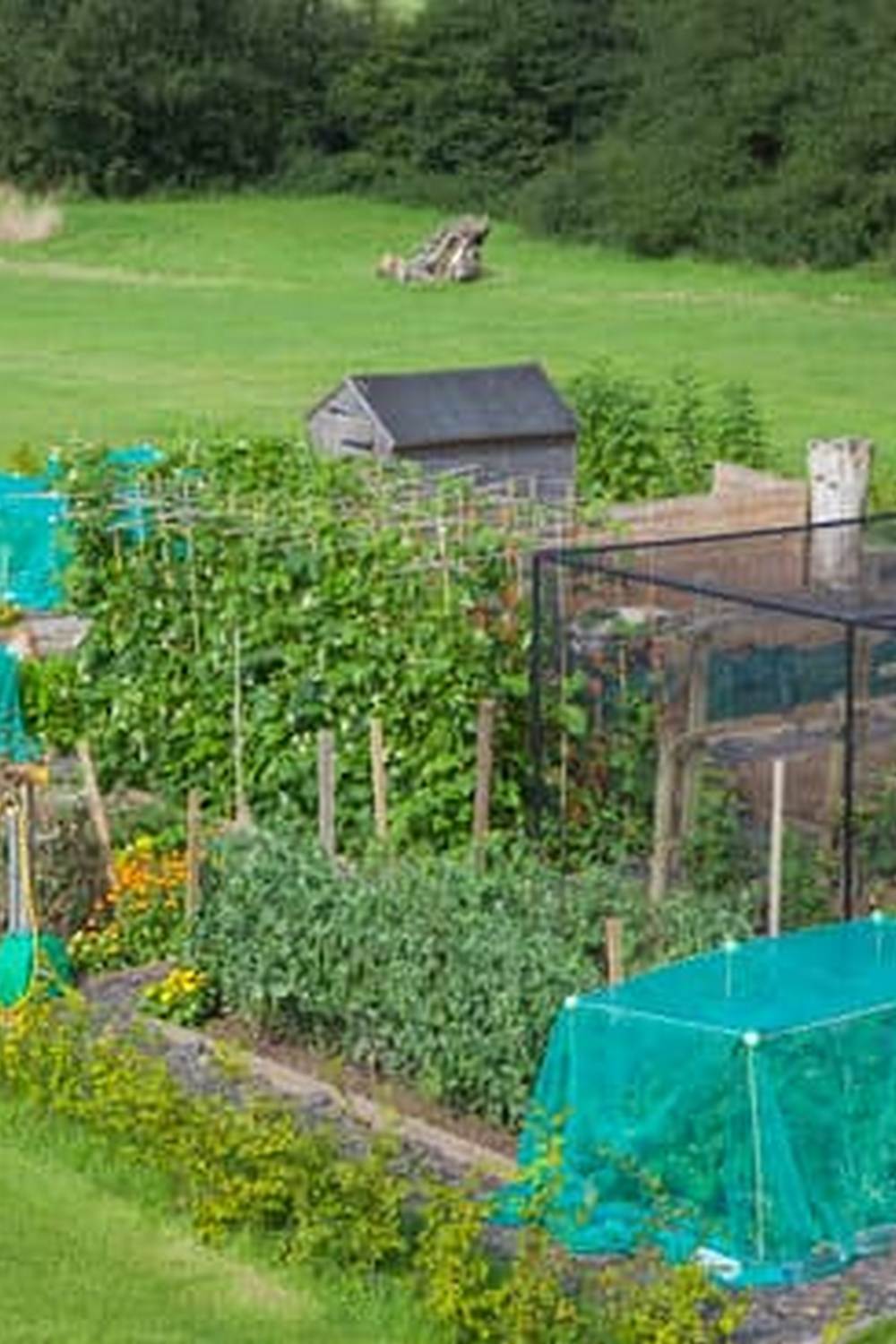Controlling grasshoppers in vegetable gardens is essential to protect your crops from potential damage. Grasshoppers are voracious eaters and can quickly decimate a garden if left unchecked. Understanding the impact these pests can have on your vegetables is crucial in developing an effective control strategy.
Grasshoppers come in various types and species, each with their own distinct characteristics and behaviors that can affect your garden differently. Identifying the specific grasshopper species present in your area is important for implementing targeted control methods. By recognizing the signs of grasshopper damage early on, you can take proactive measures to prevent further harm to your vegetable plants.
In this article, we will explore the different strategies for controlling grasshoppers in vegetable gardens, ranging from natural predators and organic control methods to mechanical barriers and biological control options. By utilizing a combination of these approaches and implementing preventive measures, you can effectively manage grasshopper populations and maintain a healthy garden ecosystem.
Identifying Grasshoppers
Grasshoppers are a common pest that can wreak havoc on vegetable gardens if left unchecked. Identifying the types and species of grasshoppers found in your garden is crucial in developing an effective control strategy. Some common grasshopper species that you may encounter include the Differential Grasshopper, Redlegged Grasshopper, and Two-Striped Grasshopper.
Types of Grasshoppers Found in Vegetable Gardens
- Differential Grasshopper: This species is known for its ability to consume a wide variety of plants, making it a significant threat to vegetable crops.
- Redlegged Grasshopper: Red-legged grasshoppers are often found in grassy areas but can migrate to vegetable gardens in search of food.
- Two-Striped Grasshopper: These grasshoppers are easily recognizable by the two distinct stripes running down their back. They feed on both weeds and cultivated plants.
Identifying Signs of Grasshopper Damage
Grasshoppers can cause extensive damage to vegetable plants by feeding on leaves, stems, and fruits. Some common signs of grasshopper damage include:
- Skeletonized leaves: Grasshoppers consume the tissue between leaf veins, leaving behind a lacy skeleton-like structure.
- Ragged edges on leaves: Grasshoppers may chew irregularly along leaf margins, giving them a tattered appearance.
- Missing or damaged fruits: Fruit crops like tomatoes or peppers may show signs of feeding damage with chunks missing or partially eaten.
By accurately identifying the types and signs of grasshopper presence in your vegetable garden, you can implement targeted control methods to minimize their impact on your crops. Whether through natural predators, organic repellents, or mechanical barriers, managing grasshopper populations is essential for a thriving garden ecosystem. Remember that prevention is key in controlling grasshoppers effectively and maintaining the health of your vegetable plants.
Signs of Grasshopper Damage
Grasshoppers can wreak havoc in vegetable gardens, causing significant damage to crops if left unchecked. Recognizing the signs of grasshopper damage is crucial in effectively controlling their population and protecting your plants. One common indication of grasshopper presence is the appearance of irregularly-shaped holes on leaves, as they feed voraciously on plant foliage. Additionally, grasshoppers may leave behind excrement on leaves and stems, further signaling their activity in the garden.
Another telltale sign of grasshopper damage is the defoliation of plants, where large portions of leaves are consumed or entire plants are stripped bare. This can severely impact plant growth and yield if not addressed promptly. Additionally, some species of grasshoppers may also feed on fruiting structures, such as flowers and developing fruits, leading to reduced harvests for gardeners.
To accurately identify grasshopper damage, it is essential to closely inspect plants for these signs and monitor for any unusual activity in the garden. Regular scouting can help detect early infestations and allow for timely intervention to prevent further damage. By being vigilant and proactive in monitoring for signs of grasshopper presence, gardeners can effectively implement control measures to protect their vegetable crops from these voracious pests.
Natural Predators of Grasshoppers
Grasshoppers can wreak havoc on vegetable gardens, devouring leaves and stems of your crops and significantly impacting the overall yield. Understanding the role of natural predators in controlling grasshopper populations is crucial for maintaining a healthy garden ecosystem. By encouraging beneficial insects that feed on grasshoppers, you can effectively manage these pests without the need for harmful chemicals.
One of the most well-known natural predators of grasshoppers is the Praying Mantis. These voracious hunters will actively seek out and feed on grasshoppers, making them an excellent addition to any garden looking to control these pests naturally. Ladybugs are another beneficial insect that can help keep grasshopper populations in check. Not only do they feast on aphids, but they also enjoy snacking on young grasshoppers.
To attract these natural predators to your vegetable garden, consider planting companion plants that provide shelter, food, and breeding opportunities for them. Plants such as dill, fennel, and yarrow are known to attract beneficial insects like ladybugs and lacewings. Additionally, avoiding the use of broad-spectrum insecticides will help preserve these natural predators in your garden and maintain a balanced ecosystem that can regulate grasshopper populations effectively.
Incorporating natural predators into your pest management strategy not only helps in controlling grasshoppers in vegetable gardens but also promotes biodiversity and reduces reliance on chemical interventions. By understanding the importance of beneficial insects and creating a welcoming environment for them in your garden, you can achieve a sustainable solution for managing grasshopper infestations while maintaining a thriving vegetable harvest.
Organic Control Methods
Grasshoppers can be a nuisance in vegetable gardens, causing damage to crops and reducing overall yield. While chemical insecticides are an option for controlling these pests, many gardeners prefer to use organic methods to protect their plants and the environment. One effective organic control method is through companion planting, which involves strategically planting certain herbs, flowers, or vegetables that naturally repel grasshoppers.
Companion Plants to Deter Grasshoppers
Certain plants emit odors or contain compounds that repel grasshoppers. For example, planting strong-smelling herbs like mint, basil, or lavender can help deter these pests from munching on your vegetables. Additionally, flowers such as marigolds and calendula are known for their ability to repel grasshoppers while attracting beneficial insects that prey on them.
Natural Repellents for Grasshoppers
There are various natural substances that can be used as repellents to keep grasshoppers away from your vegetable garden. Garlic and hot pepper sprays are commonly used to create a barrier that grasshoppers find unappealing. Neem oil is another effective organic option as it disrupts the feeding and reproductive systems of grasshoppers without harming beneficial insects.
By incorporating companion planting and natural repellents into your garden management practices, you can effectively reduce the presence of grasshoppers without resorting to chemical treatments. These organic methods not only protect your vegetables but also support a healthy ecosystem in your garden by encouraging biodiversity and beneficial insect populations. Remember to regularly monitor your plants for signs of grasshopper damage and adjust your control strategies accordingly to maintain a balanced garden ecosystem.
Mechanical Control Strategies
Grasshoppers can wreak havoc in vegetable gardens, causing significant damage to crops if left unaddressed. Implementing mechanical control strategies can be an effective way to keep grasshoppers at bay and protect your plants. One method is to use physical barriers such as row covers or netting to prevent grasshoppers from accessing vulnerable plants. These barriers create a barrier that grasshoppers are unable to breach, reducing the risk of damage.
Another mechanical control strategy is the use of traps to capture grasshoppers and reduce their population in the garden. There are various types of traps available, including sticky traps or baited traps that attract grasshoppers and prevent them from causing further damage to the crops. By regularly monitoring and emptying these traps, you can help curb the grasshopper population in your vegetable garden.
It’s essential to combine mechanical control strategies with other methods like natural predators and organic repellents for a comprehensive approach to controlling grasshoppers in vegetable gardens. By creating a multi-faceted plan that includes physical barriers and traps, you can effectively manage grasshopper populations and protect your plants from their destructive feeding habits.
| Mechanical Control Strategies | Benefits |
|---|---|
| Physical Barriers | Prevents direct access of grasshoppers to plants |
| Traps | Captures grasshoppers and reduces their population |
Biological Control Options
Grasshoppers can quickly become a nuisance in vegetable gardens, causing significant damage to crops if left unchecked. While organic and mechanical control methods are effective, biological control options offer a sustainable and eco-friendly approach to managing grasshopper populations. By harnessing the power of natural predators such as nematodes and microbials, gardeners can effectively reduce grasshopper numbers without resorting to harmful chemicals.
The Role of Nematodes in Controlling Grasshoppers
Nematodes are microscopic roundworms that feed on various pests, including grasshoppers. When applied to the soil, certain species of nematodes target grasshopper eggs or larvae, effectively reducing their numbers before they mature into destructive adults. These beneficial organisms work by infecting and killing grasshoppers from within, providing a targeted and environmentally friendly solution for controlling infestations.
Harnessing the Power of Microbials Against Grasshoppers
Microbials, such as bacteria or fungi, also play a crucial role in biological control strategies against grasshoppers. When introduced into the garden environment, these microorganisms can infect and kill adult grasshoppers or disrupt their reproductive cycles.
By using microbial-based products specifically designed for targeting grasshoppers, gardeners can effectively manage populations while preserving the balance of beneficial insects in their gardens. Incorporating these natural enemies into an integrated pest management plan can help maintain a healthy ecosystem and reduce the reliance on synthetic pesticides.
By incorporating biological control options like nematodes and microbials into their pest management practices, gardeners can take proactive measures to keep grasshopper populations in check while promoting a harmonious relationship between plants and insects in vegetable gardens. These sustainable solutions not only address immediate infestations but also contribute to the long-term health and vitality of the garden ecosystem.
Chemical Control Treatments
Chemical insecticides can be a last resort for controlling grasshoppers in vegetable gardens when other methods have not provided sufficient relief. It is crucial to choose the right insecticide, apply it correctly, and consider the safety of beneficial insects, humans, and pets in the garden. Before opting for chemical control treatments, it is essential to assess the severity of the grasshopper infestation and whether it truly warrants the use of such products.
When selecting an insecticide for grasshopper control, look for options that specifically target these pests while being safe for edible plants. It is advisable to choose products that are labeled for use in vegetable gardens and follow the instructions provided on the label carefully. Some common chemical insecticides used against grasshoppers include carbaryl, malathion, permethrin, and cyfluthrin. Be sure to wear appropriate protective gear such as gloves, long sleeves, pants, and a mask when handling and applying these chemicals.
To safely use insecticides in vegetable gardens for controlling grasshoppers, consider applying them during early morning or late evening when pollinators are less active. Avoid spraying on windy days to prevent drift onto non-target plants or areas. Remember to keep children and pets away from treated areas until the product has dried completely. Additionally, never exceed the recommended dosage or frequency of application specified on the product label to minimize environmental impact and ensure effectiveness against grasshoppers.
| Chemical Insecticides | Commonly Used Against Grasshoppers |
|---|---|
| Carbaryl | Insecticide effective in controlling grasshoppers |
| Malathion | Chemical option for targeting grasshopper populations |
| Permethrin | Insecticide suitable for use in vegetable gardens against grasshoppers |
| Cyfluthrin | Chemical treatment option specifically formulated for controlling grasshoppers |
By following these guidelines on when and how to safely use chemical control treatments in vegetable gardens against grasshoppers, you can effectively manage infestations while minimizing harm to beneficial insects and your garden ecosystem as a whole. Remember that chemical control should always be considered as a last resort after exhausting other methods mentioned earlier in this article. Prioritize environmentally friendly solutions whenever possible to create a healthy balance in your vegetable garden ecosystem while addressing pest issues effectively.
Preventing Grasshopper Infestations
Maintaining a healthy garden ecosystem is crucial in preventing grasshopper infestations and minimizing damage to vegetable crops. One effective tip is to diversify plant varieties in your garden. By planting a variety of vegetables, herbs, and flowers, you can create a more balanced ecosystem that attracts beneficial insects and natural predators of grasshoppers. This diversity helps to disrupt the lifecycle of grasshoppers and reduces the likelihood of infestations.
Another important tip for preventing grasshopper infestations is to practice good garden hygiene. Remove any debris or weeds that could provide hiding places for grasshoppers during the day. Regularly inspect your plants for signs of damage or the presence of grasshoppers, and take action at the first sign of an infestation. Additionally, rotating your crops each season can help disrupt grasshopper populations by limiting their access to host plants.
Furthermore, promoting a healthy soil ecosystem can also deter grasshoppers from taking up residence in your vegetable garden. Healthy soil with balanced nutrients will result in stronger, more resilient plants that are better able to withstand pest attacks.
Consider using organic fertilizers and amendments to improve soil health and promote beneficial microorganisms that contribute to overall plant health. By implementing these preventative measures, you can create a thriving garden ecosystem that naturally controls grasshoppers without the need for harsh chemical treatments.
Conclusion
Controlling grasshoppers in vegetable gardens is crucial to ensure a bountiful harvest and prevent extensive damage to crops. By understanding the impact of grasshoppers, identifying their types and species, recognizing signs of damage, and knowing the various control methods available, gardeners can effectively manage grasshopper populations in their gardens.
One key strategy in controlling grasshoppers is to attract natural predators and beneficial insects that feed on these pests. Encouraging the presence of these helpful creatures can help keep grasshopper numbers in check without the need for chemical interventions. Additionally, employing organic control methods like companion planting and natural repellents can create a hostile environment for grasshoppers while promoting a healthy garden ecosystem.
While mechanical control strategies such as physical barriers and traps can be effective in reducing grasshopper populations, biological control options like using nematodes and microbials offer targeted solutions to specifically target these pests. It is essential for gardeners to consider all available means of controlling grasshoppers before resorting to chemical treatments, which should be used as a last resort and applied with caution to minimize harm to beneficial insects and the environment.
By implementing a combination of preventative measures and control strategies, gardeners can successfully protect their vegetable gardens from destructive grasshopper infestations.
Frequently Asked Questions
What Kills Grasshoppers on Vegetable Plants?
Grasshoppers on vegetable plants can be killed by several methods, including hand-picking them off the plants, using natural predators like birds or predatory insects, applying insecticidal soap or neem oil, and using physical barriers like row covers to prevent grasshoppers from reaching the crops.
What Do Grasshoppers Hate the Most?
Grasshoppers seem to have an aversion to certain plants and herbs, such as cilantro, garlic, onions, and mints. Planting these around your garden can help repel grasshoppers naturally. Additionally, grasshoppers dislike strong scents like basil or marigold, so incorporating these into your garden can also deter them.
How Do Farmers Control Grasshoppers?
Farmers have various methods for controlling grasshopper populations in their fields. Crop rotation can disrupt the life cycle of grasshoppers and reduce their numbers.
Introducing natural predators or parasites specific to grasshoppers can also be an effective control method. In some cases, farmers may resort to chemical pesticides as a last resort if other methods fail to manage the infestation effectively.

If you’re looking to get into vegetable gardening, or are just looking for some tips on how to make your current garden better, then you’ve come to the right place! My name is Ethel and I have been gardening for years. In this blog, I’m going to share with you some of my best tips on how to create a successful vegetable garden.





